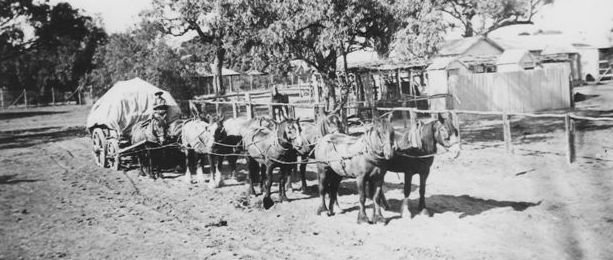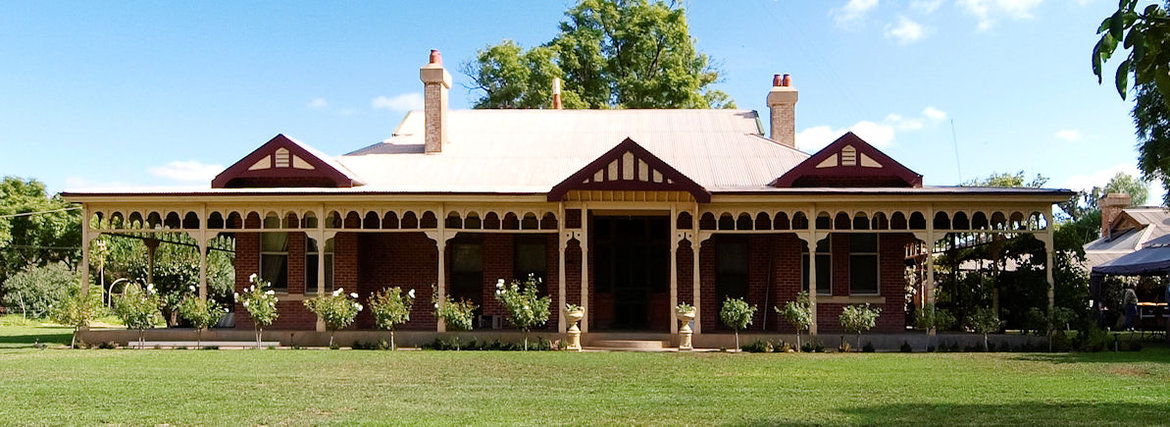
History
Major Mitchell discovered the area around Menindee in 1835 calling the place Laidley's Ponds. It was to become a major depot for later explorers, and was recognised as the "last outpost of civilisation", a jumping off place for the interior.
1836 saw the foundation of the Province of South Australia. Settlers arrive at Holdfast Bay and new colony of South Australia proclaimed by Governor John Hindmarsh. And in 1837 Adelaide is chosen as site for the capital of the colony.
Charles Sturt travelled up the Darling from the Murray and arrived at the site of Menindee in 1844, during his exploration of the interior. Pastoralists, drovers and shepherds followed in the wake of the explorers.
In the mid-1840s the fledgling settlement at the junction of the Murray and Darling Rivers had become "McLeod's Crossing" (Wentworth).
Bindara Station was originally settled and named "Netley" by the Rankin family in 1849, but was abandoned after three hard years.
In 1852 the South Australian Government offers a prize to paddle steamers to reach the junction of the Murray and Darling Rivers (Wentworth). And in 1953 William Randell and Francis Cadell prove that the river is navigable by paddle-steamer. Commercial navigation commences.
John McKinlay, the famous explorer and bushman, purchased some of the river frontage around Menindee in 1852. In 1853 McKinley sold his property, Weinteriga to Commissioner of Lands George M. Perry and his brother A. T. Perry. George Perry became a police magistrate and came to Menindee with two troopers under his command.
The township of Perry (Menindee) is said to have been founded by Tom Pain and his family who arrived in 1852, determined to establish a home and business on the river. He opened a pub on the Wurtindley sandhill, the following year.
With the growth of the river trade in the 1850s, the arrival of a police force and Pain's presence, prospects for the settlement of the region improved. The runs of the Central Darling were officially surveyed and opened for tender in 1855.
In 1855 John McKinlay successfully tendered and secured the Coonalhugga (Netley), Willotia, and Yaltalka (Cuthro) runs for his old friend and future father-in-law James Pile.
Captain Francis Cadell, who pioneered the operation of river steamers along the Murray, established a store near the hotel at Menindee in 1856. Settlers began to pour into the region with news that the Darling was navigable.
The Coonalhugga run (Netley) being the land between the Coonalhugga Creek and the Darling River was transferred to Joseph Dunne in 1857. At about the same time Dunne also obtained Bintullia run on the western side of Coonalhugga.
Wentworth officially named as a town in 1859.
The explorers Burke and Wills camped on the property in 1860 during their epic journey. It was here that they dried beef in readiness for their trek north, to the Gulf of Carpenteria.
In 1860 The West Darling area was in the grip of a very severe drought. All river traffic had ceased as the river was just a series of water holes.
A post office opened Menindee in 1861 and the site was officially known as 'Perry' but locals protested and the township was gazetted as Menindie in 1863 (it was changed to Menindee in 1918 to stop confusion with Mendingie near the river Murray mouth). By 1862 Menindee was could boast a lock-up, a store, a post office, a Pub and a few rough shanties.
It wasn't until 1865 that the drought broke and the Darling River was in flood, enabling the paddle steamers once more to navigate their way up the meandering river.
The majestic red brick homestead and out buildings were built on Bindara, by Dunne in around 1870. Bricks were fired on the property using the local clay, and the rest of the building materials were transported up the river by steam driven paddle boats. His homestead known as "Government House" overlooked the Darling River and is still in use today.
It was Joseph Dunne who developed the famed "Netley Station" and by 1871 had extended its boundaries from the western bank of the Darling River back to the South Australian boarder, a holding of just under a million acres.
In good years he ran almost 115,000 sheep, 750 head of cattle and 820 horses. The Sheep were shorn in the 48 stand shearing shed, twelve months of the year. Dunne's vision was to develop the property to run 100,000 sheep and 10,000 cattle. Netley was renowned for being the land of "milk and honey". Large orange orchards, grapevines and gardens supplied the 200 staff with fresh fruit and vegetables.
The station boasted a store, pub, school and smithy. It was also a port of call for paddle steamers making their trips up and down the river. Dunne experimented with steam pumping and by 1875 his neighbours were following his innovations. The irrigated lucerne sustained his breeding and racing horses and pedigree stud bulls.
1887 Mildura was founded by the Chaffey brothers.
1890 River Floods
Large parts of the property were resumed by the government after the first and second world wars and the property was eventually broken up in to much smaller runs. The name Netley remained with the last portion to be sold and now fronts the Silver City Highway between Wentworth and Broken Hill.
The river frontage was sold to the Packer family in 1936 and named Bindara.
The present owners purchased the property in 1981 and are in the process of restoring the homestead and outbuildings and replanting the extensive gardens.

